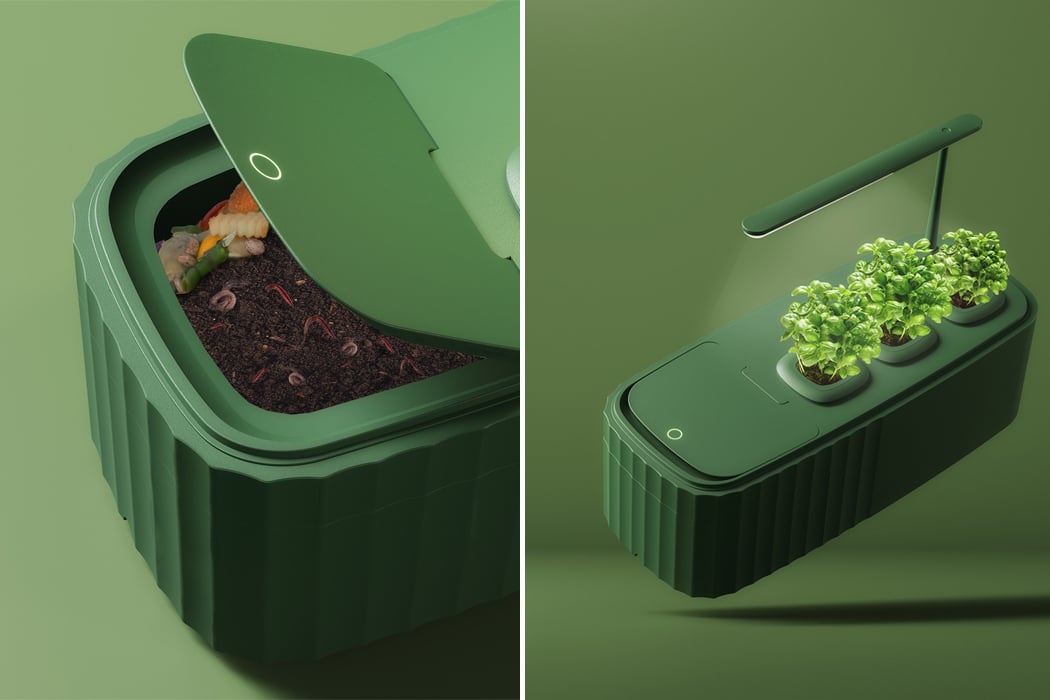
KAGURA’s system is comprised of three main working parts: a container for food waste, an elevated light structure, and three soil pots. The food waste container is located on one side of the indoor planter and turns your leftover food scraps into compost for fertilizer. Composting is a method used to decompose organic solid waste and fertilize the soil for gardening. The slim, attractive light fixture is situated directly above KAGURA’s garden pots and provides the mini garden with nourishing light-energy. The indoor, gardening system is completely self-sustaining and conveniently sized in order to fit into any kitchen or living space. The system itself works after food waste is dumped into the container on the left-hand side, fertilizing the soil contained in the trio of modestly sized pots, each of which provides energy for plants to then grow and thrive.
Chaozhi Lin conceptualized KAGURA in order to “[keep] food from entering landfills” and for users “to cultivate their own small vegetable garden,” because food accounts for 46.2% of combustible waste. The interest in gardening, especially indoor gardening, and sustainable living is rising with younger generations as city living becomes more popular. In urban spaces, ecologically conscious living is tricky as there’s less yard space and community gardens can be hard to come by. KAGURA makes sustainable living possible for any city home, from the small efficiency studio to the three-story townhouse. As long as you’ve got a kitchen counter or windowsill, your personal vegetable garden awaits.
Designer: Chaozhi Lin